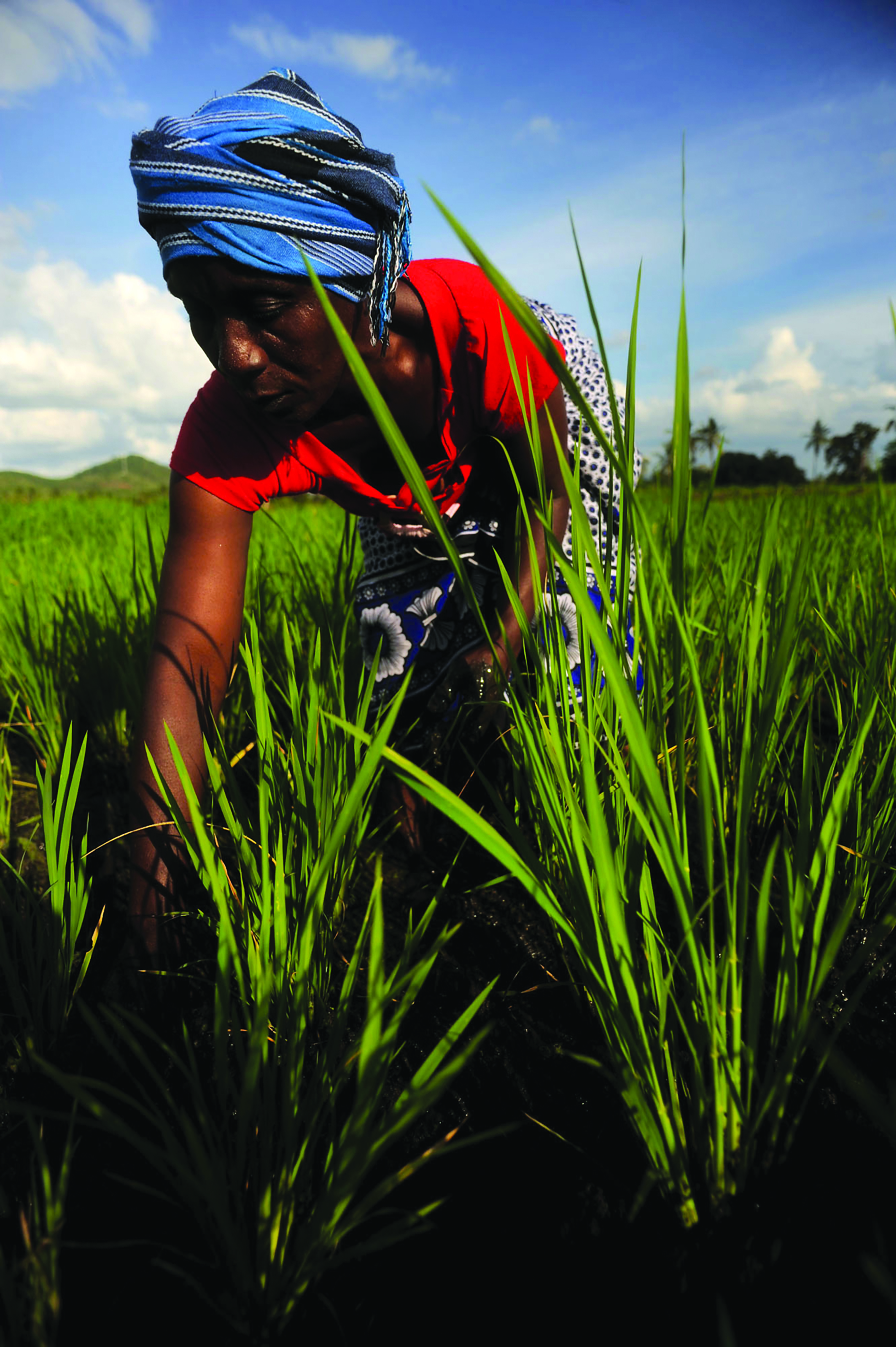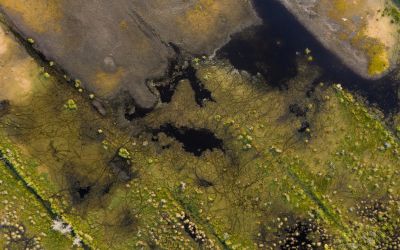Transforming agriculture to address climate change
José Graziano da Silva, Director-General, Food and Agriculture Organization of the United Nations, asserts that the path to sustainable food and agriculture depends on turning climate commitments into action now.
Climate change is already having an impact on agriculture, and the implications for food security are alarming. They highlight the urgent need to support smallholders in adapting to the challenges the whole world faces. Farmers, pastoralists, fisherfolk and community foresters all depend on activities that are intimately and inextricably linked to climate. Their livelihoods are thus the most vulnerable to climate change. They will require far greater access to technologies, markets, information and credit for investment to adjust their production systems and practices to climate change.
Action must be taken now to make agriculture more sustainable, productive and resilient. Otherwise, the impacts of climate change will seriously compromise food production in countries and regions that are already highly food-insecure – and jeopardise progress towards the key Sustainable Development Goals of ending hunger and poverty by 2030. We cannot let that happen, especially as the negative impacts on agriculture will be even more widespread after 2030.
Food security is under threat
Through its effects on agriculture, livelihoods and infrastructure, climate change threatens all dimensions of food security. It will expose both urban and rural poor to higher and more volatile food prices. It will also affect food availability by reducing the productivity of crops, livestock and fisheries, and hinder access to food by disrupting the livelihoods of millions of rural people who depend on agriculture for their incomes.
Hunger, poverty and climate change need to be tackled together. This is, not least, a moral imperative as those who are now suffering most have contributed least to the changing climate.
Adaptation strategies
FAO’s new State of Food and Agriculture 2016 report describes ways of adapting smallholder production to climate change and making the livelihoods of rural populations more resilient. Diversification and better integration of food production systems into complex ecological processes create synergies with the natural habitat instead of depleting natural resources. Agroecology and sustainable intensification are examples of approaches that improve yields and build resilience through practices such as green manuring, nitrogen-fixing cover crops and sustainable soil management, and integration with agroforestry and animal production.
 More resilient agriculture sectors and intelligent investments in smallholder farmers can deliver transformative change, enhancing the prospects and incomes of the world’s poorest while buffering them against the impacts of climate change.
More resilient agriculture sectors and intelligent investments in smallholder farmers can deliver transformative change, enhancing the prospects and incomes of the world’s poorest while buffering them against the impacts of climate change.
We know things that can be done now. And we know that the benefits of adaptation outweigh the costs of inaction by very wide margins. The transformational path to this sustainable and more equitable agriculture requires assuring better access to adequate extension advice and markets. Barriers such as insecurity of tenure, high transaction costs, and lower resource endowments – all of which are especially acute among rural women – must be overcome.
Livelihood diversification can also help rural households manage climate risks by allowing for on-farm activities to be cushioned by seasonal work, in agriculture and in other sectors. In all cases, social protection programmes will need to play an important role – they help smallholders manage risk better, reduce vulnerability to food price volatility, and enhance the employment prospects of rural people who leave the land.
In order to keep the increase in global temperature below the crucial ceiling of 2°C, overall global emissions will have to be reduced by as much as 70 per cent by 2050.
Implementation of the Paris Agreement
The agriculture sectors, which themselves account for at least one-fifth of total emissions, mainly from the conversion of forests to farmland as well as from livestock and crop production, must contribute to this global imperative – while at the same time rising to the challenge of meeting the expected 60 per cent increase in need for food.
This can be done. There are known ways for the agriculture sectors to contribute substantially to balancing the global carbon cycle. Similarly, avoiding deforestation, increasing the area under forest, and adopting sustained-yield management in timber production can bind large amounts of atmospheric CO2.
Soils are pivotal in regulating emissions of CO2 and other greenhouse gases. Appropriate land use and soil management techniques lead to improved soil quality and fertility, enhancing sustainable crop yields and mitigating the rise of atmospheric CO2.
It is essential that national commitments – the country pledges that form the basis of the 2015 Paris Agreement on climate change – are translated into action. The November Conference of the Parties in Morocco will have a clear focus on implementation in the agriculture sectors.
FAO’s focus on climate change
FAO has identified strategies, financing opportunities and data and information needs, and articulated transformative policies and institutions that can overcome barriers to implementation. As countries revise and hopefully ramp up their national plans, successfully implementing those commitments will be vital to creating a virtuous cycle of even higher ambition. Owing to their complex and varied conditions around the world, the agriculture sectors require particular and immediate attention. Soil must be prepared and seeds sown before we can harvest and glean.
To assist its members, FAO has invested in areas that promote food security hand in hand with climate change adaptation and mitigation. FAO is helping to reorient food and agricultural systems in countries most exposed to climate risks, and has a clear focus on supporting smallholder farmers.
FAO applies all of its areas of expertise to the pursuit of new models of sustainable, inclusive agriculture. Through the Global Soil Partnership, FAO promotes investment to minimise soil degradation and restore productivity, thus stabilising global stores of soil organic matter. We participate in the Global Agenda for Sustainable Livestock, and have launched a programme to reduce enteric emissions of methane from ruminants using measures suited to local farming systems. In the fisheries sector, the Blue Growth Initiative is integrating fisheries and sustainable environmental management, while a joint programme with the European Union aims at protecting carbon-rich forests. Guidance is provided on how to include genetic diversity in national climate change adaptation planning, and we have joined forces with the United Nations Development Programme to support countries as they integrate agriculture in adaptation plans and budgeting processes. FAO also helps link developing countries to sources of climate financing.
Whether humanity succeeds in eradicating hunger and poverty by 2030, as promised, depends on all members of the international community enabling agriculture, forestry and fisheries to adopt climate-friendly practices – starting today. ‘Business as usual’ is not an option.
Agriculture has always been the interface between natural resources and human activity, and now it holds the key to humanity’s two greatest challenges: eradicating poverty, and maintaining the stable climatic corridor in which civilisation can thrive.
Read the full Climate Action 2016/17 Publication here








